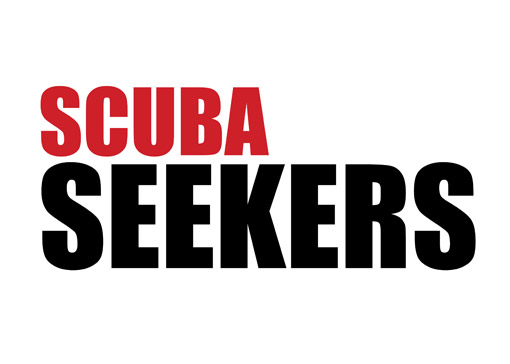
Mapping the Abu Talha Canyon
In December 2018 we started the Abu Talha Canyon Project. Our aim is to map and create a 3D model of this fascinating tectonic feature.
It’s a site that’s not as well known, or as well dived, as Dahab’s more famous Canyon. The main reason being that the depth and location of the Abu Talha Canyon makes it a technical diving site, rather than a recreational one.
Our team love diving the Abu Talha Canyon and this project has been a fantastic opportunity to learn more about its topography.
The project: how to map a canyon
Mapping features like this underwater can be challenging but incredibly rewarding. We’re using multiple methods to map the canyon and create our 3D model. In the initial phase of this project we’ve conducted a 2D survey and created a map of the site.
This is what we’ll be using as the basis for our eventual 3D model. Carrying out this kind of survey underwater and at depth takes time and a well-trained dive team. JP Bresser has been instrumental in getting us started, and creating the initial 3D model.
Our team have been measuring distances underwater, making notes of specific features, taking still photos and shooting videos on their dives. Combining all of these elements has enabled to us to create an initial 3D model of the canyon using Sketchfab. You can see the detail of the canyon’s walls and how it twists and turns through the reef.
But this is just a baseline 3D model. We’re not finished yet. In the coming phases of this project, we’ll be continuing our survey work, allowing us to add more features. We’ll also be including key information about the depth and length of the Abu Talha Canyon, as well as its direction.
The video JP Bresser has produced gives an indication of the scale of the Abu Talha Canyon, but when you look at it next to the 3D model it’s easy to see that a video is far from the whole picture of this incredible site.
Training the team: GUE Documentation Diver
The team taking part in the Abu Talha Canyon Project have all completed their GUE Documentation Diver qualification. This is a four-day course that includes six dives and a minimum of 32 hours of instruction.
It’s designed to prepare divers for project-based work and it teaches you reliable techniques for documenting your dives. This includes basic videography and photography, survey and mapping skills, planning techniques and specific communication and team skills that are needed during documentation dives.
You’ll also learn how to set clear objectives and work plans for your project, as well as how to manage team tasks and create a report about your activities.
The course builds on your core diving skills, whether recreational or technical, and will give your dives a purpose beyond simply having fun (although that’s important too). Completing this course will not only improve your diving skills, but also mean you have the opportunity to get involved in projects like ours to map the Abu Talha Canyon.
Some of our previous GUE Documentation Diver students created a video about their experiences of the course – take a look to get a better idea of what’s involved.
GUE Documentation Diver 2018 from JP Bresser on Vimeo.
If you’re interested in completing your GUE Documentation Diver qualification, or any other GUE courses, get in touch with us to learn more.
Don’t forget to check in with our blog and Facebook pages to see the latest updates from the next phases of the Abu Talha Canyon Project as we make more progress in the future.
